Watch Ferns Get Freaky
Look at the underside of a fern leaf. Those rows of orange clusters aren’t tiny insects; they’re spores waiting to be catapulted away. Once a spore lands, it grows into a tiny plant, from which fern sperm swim away, searching for an egg to fertilize. Think of *that* next time you’re hiking in the forest.
Episodes
-
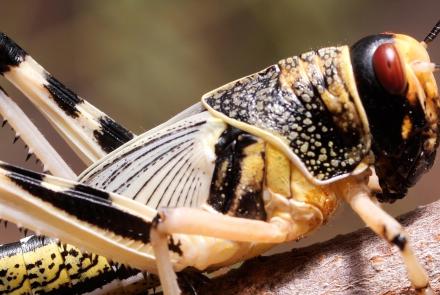
These Swarming Locusts Are Grasshoppers Gone Wrong
S8 E20 - 4m 46s
They might look like harmless grasshoppers, but locusts have an appetite for destruction. When the conditions are right, they transform from mild-mannered loners into gregarious partiers. They swarm, causing chaos and suffering at the level of a biblical plague. So what sets them off?
-
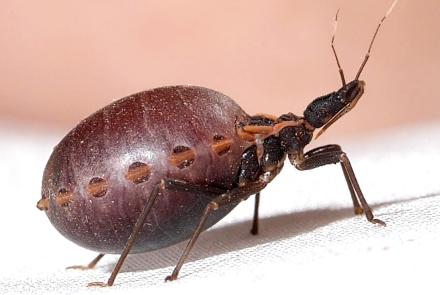
How a Kissing Bug Becomes a Balloon Full of Your Blood
S8 E19 - 4m 58s
A kissing bug gorges on your blood. Then it poops on you. And that poop might contain the parasite that causes Chagas disease, which can be deadly. Without knowing it, millions of people have gotten the parasite in Latin America, where these insects live in many rural homes. As if that wasn’t bad enough, the saliva of some kissing bugs in the U.S. can give you a dangerous allergic reaction.
-
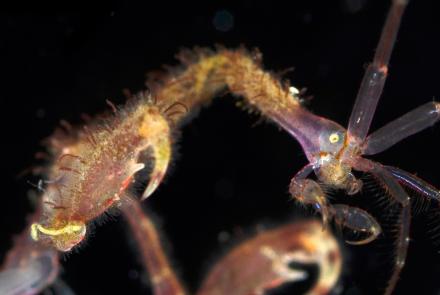
Skeleton Shrimp Use 18 Appendages to Feed, Fight and Frolic
S8 E18 - 4m 38s
On first impression, skeleton shrimp anatomy is confusing. These crustaceans use a funky assortment of body parts to move around like inchworms, feed on bits of sea garbage, stage boxing matches, and make lots of clingy babies.
-
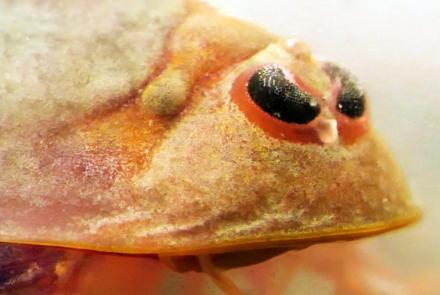
Tadpole Shrimp Are Coming For Your Rice
S8 E17 - 4m 42s
Tadpole shrimp are neither tadpoles nor shrimp. They’re time-traveling crustaceans called triops. Their eggs can spend years – even decades – frozen in time, waiting to hatch. When California rice growers flood their fields, they create the perfect conditions for hordes of these ravenous creatures to awaken.
-
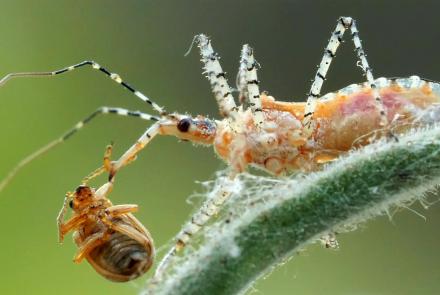
You Can’t Unsee the Assassin Bug’s Dirty Work
S8 E16 - 3m 30s
Under the bright yellow petals of a tarweed plant, an insect known as the assassin bug kills its caterpillar victim by stabbing it over and over. But does this perpetrator have an accomplice? Sticky droplets all over the plant could be a clue.
-
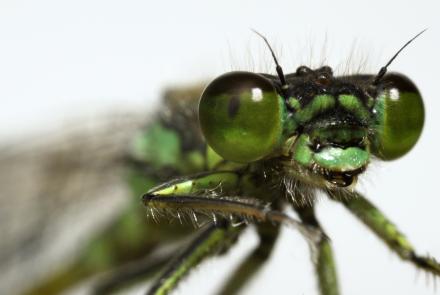
These Rare Damselflies Find Love With a Twist in Fog City
S8 E15 - 4m 26s
Most damselflies prefer sunny spots, but the quirky San Francisco forktail damselfly digs the fogginess of its hometown. When they hook up, they do it in style – linking their delicate bodies in a heart shape, then flying tandem for an hour or more after.
-
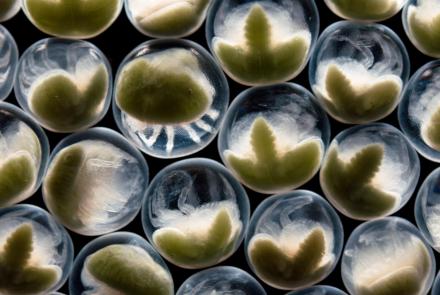
Once a Spawn a Time: Horseshoe Crabs Mob the Beach
S8 E14 - 4m 51s
Horseshoe crabs may look scary, but when it’s springtime in Delaware Bay, millions of these arthropods show they’re lovers, not fighters. They lay masses of blue-green eggs up on the shore. At just the right time, they pop and release the larvae within to the sea.
-
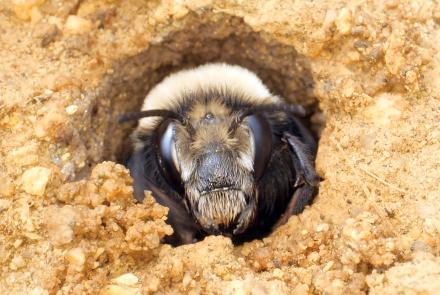
This Bee Builds Sandcastles at the Beach
S8 E13 - 4m 29s
While you’re enjoying a day at the beach, female bumblebee-mimic digger bees are hard at work nearby building a different kind of sandcastle. This one’s not for play – it’s part of the nest where their offspring will grow.
-
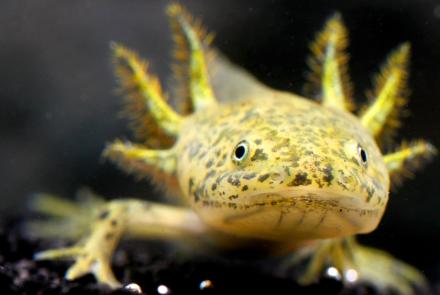
The Axolotl Salamander Doesn’t Wanna Grow Up
S8 E12 - 4m 42s
Native to the lakes of Mexico City, the axolotl stays in the water its whole life, swimming with a tail fin and breathing through frilly external gills. It’s nearly extinct in the wild, but survives in research labs the world over, studied for its amazing regenerative abilities. With our help, can these beloved creatures thrive once again in their ancestral home?
-
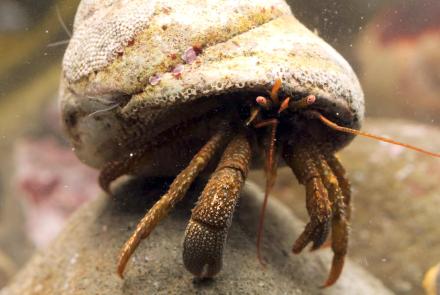
Watch These Hermit Crabs Shop for the Perfect Shell
S8 E11 - 4m 9s
Hermit crabs are obsessed with snail shells. These crafty little crabs, found in California's rocky intertidal zone, are more than happy to let the snails build them a perfect home. When the crabs find a snail shell they like, they hop right into their new abode.
-
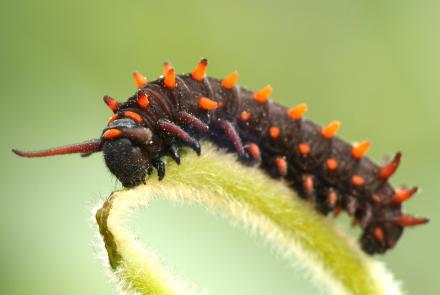
The Pipevine Caterpillar Thrives in a Toxic Love Triangle
S8 E10 - 5m 3s
The devilish caterpillars of the pipevine swallowtail butterfly *devour* the California pipevine, never mind that the plant is trying to poison them. Their butterfly moms don’t pollinate the pipevine in return, though. So, the vine traps unlucky gnats in its labyrinthine flowers to do the job.
-
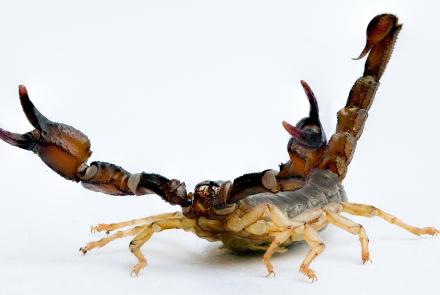
Scorpions Are Predators With a Sensitive Side
S8 E9 - 3m 56s
Look past their grasping claws and lightning-fast stingers, and you’ll see scorpions have a delicate pair of comb-like organs on their belly called pectines. These sensory body parts help them navigate, and figure out who’s a menace, a meal or a mate.
WETA Passport
Stream tens of thousands of hours of your PBS and local favorites with WETA Passport whenever and wherever you want. Catch up on a single episode or binge-watch full seasons before they air on TV.
Similar Shows
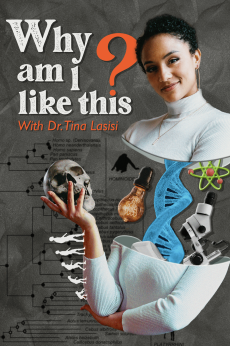
Why Am I Like This?
Science and Nature
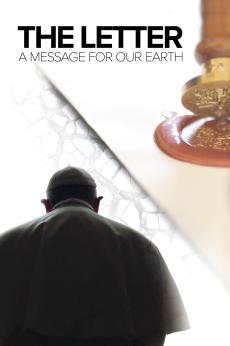
The Letter: A Message For Our Earth
Science and Nature

EARTH A New Wild
Science and Nature

Life from Above
Science and Nature

Concussion: Answers in the Blood?
Science and Nature

Hungry Planet
Science and Nature

The Brain Revolution
Science and Nature

BrainCraft
Science and Nature

ReInventors
Science and Nature
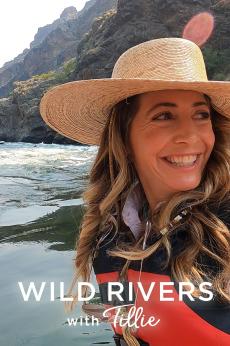
Wild Rivers with Tillie
Science and Nature